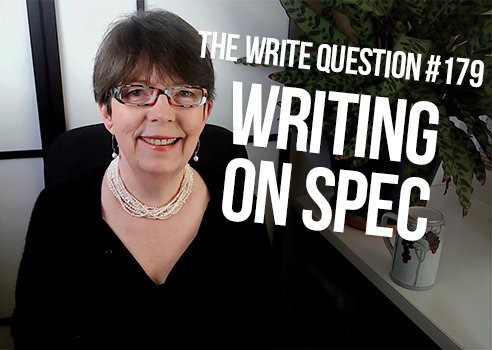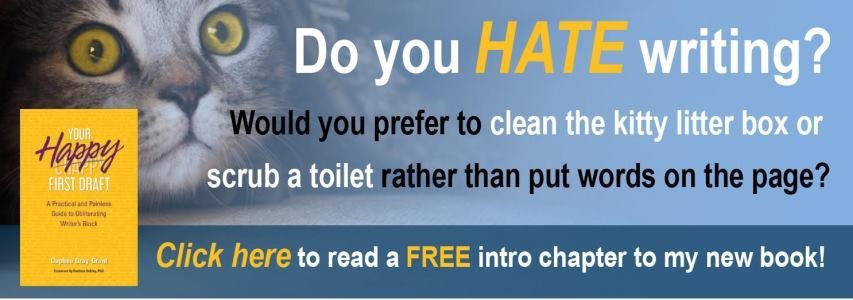Viewing time: 4 mins 22 secs
The Write Question is a weekly video podcast all about writing. Today’s question? Should you write on spec? If you have a question you’d like me to answer you can email me, tweet me @pubcoach, or leave a message for me at the Skype account, The Write Question.
Transcript:
Should you write on spec? That’s the topic I’m addressing today in The Write Question. I’m Daphne Gray-Grant, the Publication Coach, still in pandemic mode.
I have a question from Heather Maher, a writer based in Paterson, New Jersey. Here’s what she’s asked by email….
“After finally getting my two kids into high school, phew!, I’m trying to establish a career as a freelance writer. Because I don’t yet have any “clips,” I’m wondering if I should focus on writing on spec. What do you think?”
Thanks for your question, Heather. Just in case there are people watching this video who don’t know the lingo associated with freelancing, I’m going to begin by defining two of the terms you’ve used.
“Spec” is short for the phrase “on speculation” and it means you write a piece without a guarantee that anyone is going to buy it. In other words, you come up with the idea, you do the interviews, you do the writing and THEN you try to sell the piece.
“Clips” — sometimes also known as “tear sheets” — are articles that you have written and had published. If you want to succeed as a freelancer, it’s very helpful to have a good selection of clips. Essentially, they are proof that you know how to write and that other publications have trusted you.
But I know clips are a giant Catch 22. How do you get clips if you’ve never been published before? And how do you get published without them?
In short, some people will write on spec to get around this problem. Here are my thoughts about why you shouldn’t be too quick to do that:
First, you might be doing a lot of work for no good purpose. You don’t know anything about the editor’s plans for their publication and it’s highly possible that you’ll misjudge what they’re looking for.
Second, the editor has no investment in you. You are totally unknown to them and they have not had the opportunity to help shape the story in any way, perhaps by suggesting who you should interview. Your odds of success are not high.
For these reasons, it’s almost always better to begin with what’s called — another technical term! — a pitch. This is where you introduce yourself to the editor, in writing, and explain the details of the story you want to produce.
You need to do this succinctly — no more than four or five paragraphs that you keep to one page. The pitch must include the number of words you want to write and show how the proposed story fits in with the objective of that publication. You should also briefly explain why you are the perfect person to write this particular story.
NOW, if you don’t have clips, in this pitch you can offer to write the story on spec, and the editor might just bite. But you’ll stand a much greater chance of succeeding by having made the contact first rather than just showing up with a finished piece.
Of course, it’s always better to have some clips in the first place. So, to get around the Catch 22, I suggest you look for a worthy organization for which you can volunteer as a writer. The Cancer Society. The Heart Foundation. The Red Cross. Of course, you could also volunteer at your kids’ high school but by picking a big-name organization, you’re far more likely to get some useful feedback and a credential — a clip — that will carry more weight.
Finally, let me wrap up with a quote from the actress and former UNICEF Ambassador Audrey Hepburn: “As you grow older, you will discover that you have two hands — one for helping yourself, the other for helping others.”
One last point, Heather, some outlets accept certain types of articles ONLY on spec — an example is the Modern Love column in the New York Times. When “on spec” is a stated requirement, you should of course go ahead with it.
*
If you’d like to learn more about how to make writing a happier and more rewarding process, check out my latest book Your Happy First Draft. I don’t sell it in bookstores or via Amazon. The only place to buy it is on my website, link on the screen below and in the show notes.


